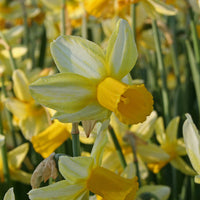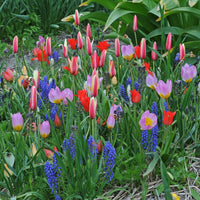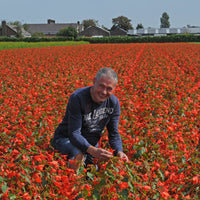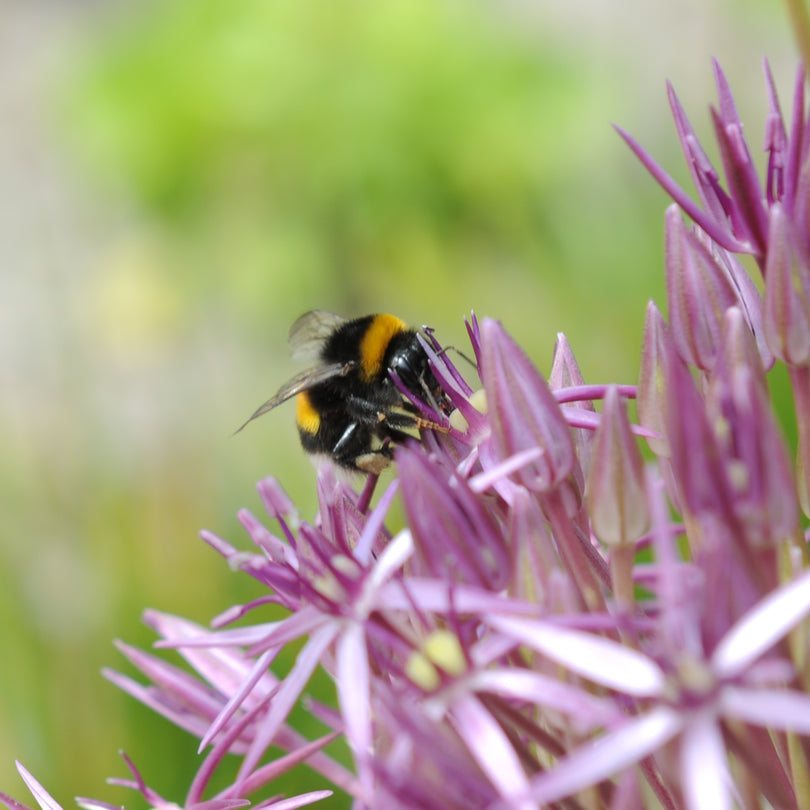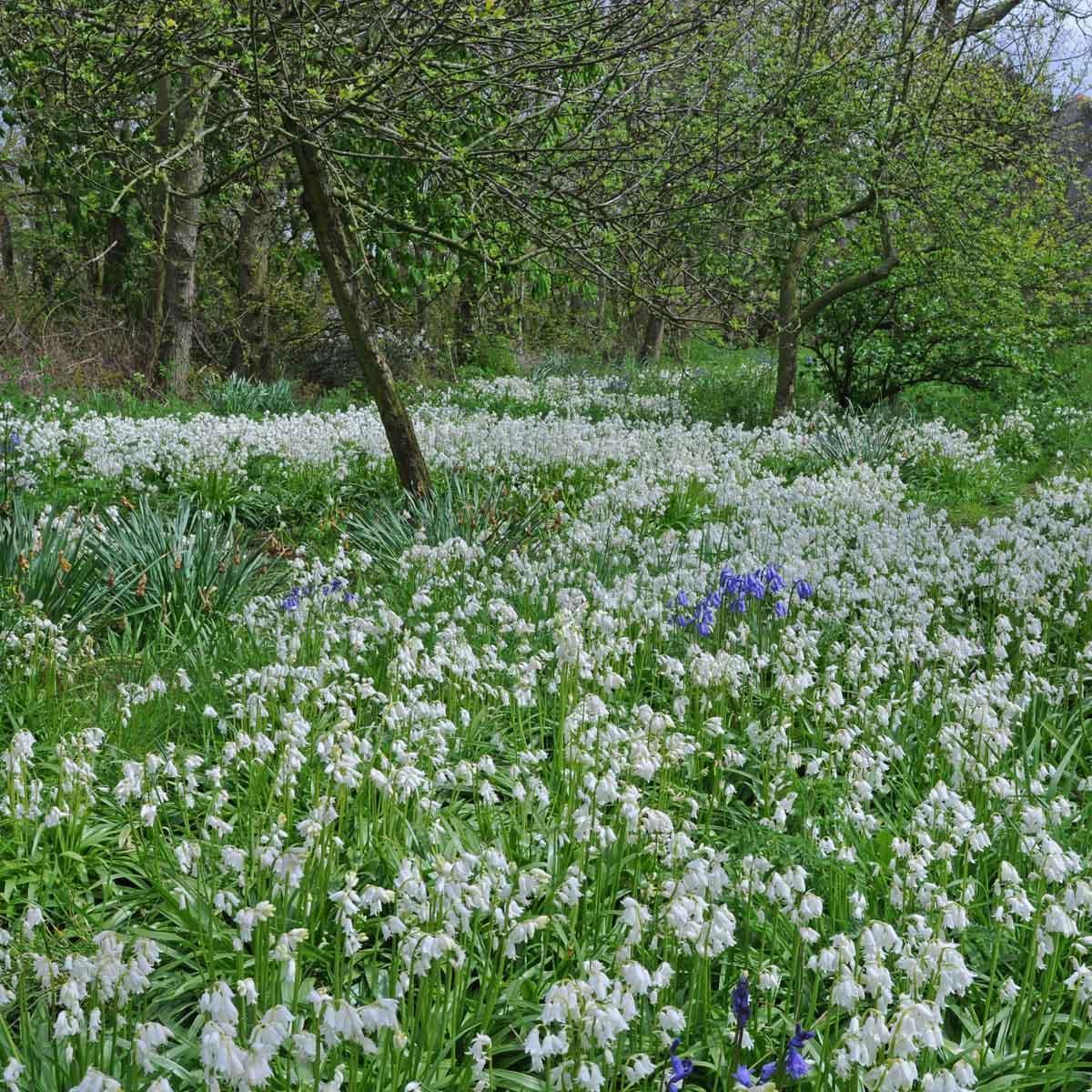Basque Country
The previous two newsletters were a complete failure but now I really can't avoid it, I'll have to tell you about Spain sometime. A discovery trip in the Pyrenees organized by Brian Duncan with the aim of admiring as many Daffodils as possible in their natural environment.
Narcissus bicolor
Daffodils in the Pyrenees? You may wonder. Yes, the Daffodil originates from the south of Europe and especially on the Iberian Peninsula. Spain and Portugal are the cradle of dozens of different wild Daffodils . There are also Daffodils in the wild to be found in the Alps, in France and even a few in the north of Africa, but the vast majority are found in Spain and Portugal.
Narcissus alpestris
Some Narcissi are only found in a few places, other species occur in large parts of the peninsula. Here and there in such large numbers that you can hardly believe your eyes, like dandelions or buttercups in a meadow, so many.
Narcissus poeticus
I sometimes jokingly say 'there are at least three times as many Daffodils in Spain and Portugal than in the Netherlands and England put together'.
This trip it was mainly the Poeticus Narcissus that we encountered in enormous numbers. The ancestors of the Narcis Actaea and the Narcis recurvus that you can find in the Fluwel webshop.
Narcissus poeticus
We often encountered them along the road, on mountain slopes, in forest edges and in meadows. But for the real explosion of poeticus flowers we are still just a little too early.
To show us what we were missing, a friendly hotel owner pulled out an old photo of a nearby meadow that was completely filled with poeticus Daffodils . Unfortunately, the owner of this meadow had decided to let his horses graze on it, and in recent years there were no Daffodils to be seen here. But there are still many places where this can be seen.
Narcissus bicolor
The same man surprised us by telling us that the most beautiful Narcissus attraction, the flowering of the Narcissus bicolor, had yet to come. That was always between 15 and 20 June. That really surprised us because in our eyes the bicolor is a fairly early flowering Narcissus, which you don't expect when it's almost summer. No, for this Narcissus you had to go to the ski slope, at an altitude of over 2000 meters. She colors the mountains completely yellow around mid-June, the good man told us.
We are not sure whether it was really the Narcissus bicolor, it could also be the Narcissus abscissus, which is also common there.
A beautiful dark yellow form of the Narcissus abscissus
What also struck me was the enormous variation within a certain species. Often there is discussion about the name of a certain species, Narcissus experts know how to tell in detail what a certain species looks like.
Narcissus bicolor
Take this site, everywhere tufts of Narcissus bicolor. At first glance they all look the same.
Narcissus bicolor
But if you pick a flower from each tuft, and you put them next to each other you see what an enormous variation there is to see, really every flower is different. The bicolor on the bottom left and the one on the top right are really completely yellow. So you can't say that Narcissus bicolor is always two-colored; yellow with a white perianth.
A special Crocus vernus. High in the mountains, against the snow line, sometimes even in the snow, you can often find Crocuses.
Her Royal Highness Sally Kington in discussion with Brian Duncan
I gave the bunch of bicolor to Her Majesty and even she was amazed at the enormous differences within that one species. I have to tell you why I call Sally Kington Her Majesty, she is RHS Royalty. Sally used to work for the RHS (Royal Horticultural Society) where she was responsible for the registration of Daffodils. She has a huge knowledge of Daffodils and she is also very well-mannered. That commands respect, I see her as Royalty and started calling her 'Her Majesty' years ago. An affectionate name that is used by many Daffodil people today. If you say Her Majesty everyone knows who you are talking about. And, Sally is also old, very old. She does not want to say her real age but she did tell me that she heard the bells of Big Ben ringing from her palace at the birth of Queen Elizabeth. For the non-Royalty watchers among us, that was in 1926.
Narcissus assoanus, a miniature daffodil that can be found in many places in Spain.
I can hear you thinking, were you going to the mountains with such an old chap, yes indeed, there were three more with us who were well into their eighties. There was a lot of Narcissus knowledge in the Pyrenees. All with hearing aids, but except for Sally you had to speak loudly with everyone. Her Majesty knew how to adjust her hearing aid well.
Whenever we came across a Daffodil somewhere, there was always a friendly 'Carlos, would you be so kind to pick a flower and bring it to me?' Saying no is not an option, because Her Majesty starts telling stories about the torture chambers she had built under Tower Bridge as a silent hint (yes, she has a sense of humour) so then you climb back up the rocks to please Her Majesty with a flower.
As a result of the picking expeditions at the end of the journey, a nice vase with flowers.
Narcissus x montserratii
It is also interesting to note that not all Narcissi are equally Roman. Sometimes it happens that in the quiet hours, when there is really no one around, one species Narcissus, very secretly, starts a love affair with another species Narcissus high up in the mountains. The result is a species hybrid. The Narcissus in the photo is a descendant of such an extramarital romantic adventure. Narcissus x montserratii is a descendant of the Narcissus poeticus and the Narcissus abscissus, it is unknown who the father and who the mother is. It is interesting to see that the poeticus immediately transfers its orange-red color. The orange-red color at the edge of the crown of the poeticus Narcissus is not found in any other species Narcissus. All beautiful contemporary Narcissi with orange and red, and probably also the pink, originally come from these beautiful poet's narcissi. The N. x montserratii shows us what the first cultivated Daffodils looked like about a hundred years ago.
But it is time to stop again, finally the story of the Pyrenees expedition has been told.
Probably no newsletter next week. I have to go on a week trip with an American customer to look at Peonies and Lilies.
Kind regards,
Carlos van der Veek

